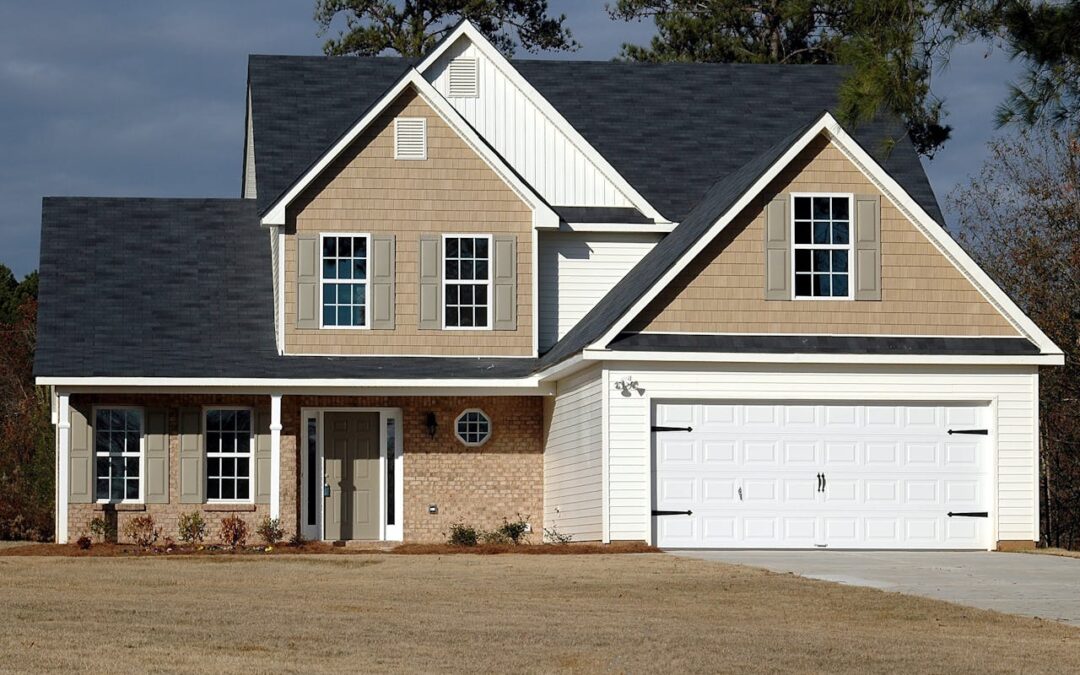Winter in Vancouver doesn’t always bring mountains of snow, but the cold, damp weather still finds its way into homes and garages. That drop in temperature can quietly mess with how your garage door works. From stiff rollers to brittle seals, garage doors often take the brunt of seasonal changes without much notice until something stops working. A door that ran smoothly in September might strain, stick, or get noisy during a chilly January morning.
Prepping your garage door for cold months isn’t just about comfort. It’s about avoiding the kinds of failures that tend to happen when it’s least convenient. Taking a few simple steps now can keep your garage door working well and reduce the chances of needing emergency fixes when it’s cold and dark outside. With proper care, you won’t have to stress about a surprise breakdown during a winter morning rush.
Inspect and Seal Your Garage Door
Cold air doesn’t need much space to sneak in. Garage doors, especially older ones or those used daily, can shift over time. Cracks, worn corners, or dried-out seals might not seem like a big deal—until you start feeling chilly breezes or noticing water puddles along the ground. The edges around the door frame are often to blame.
Start with a visual check around the top, bottom, and both sides of the door. Can you spot any daylight peeking through when the door is shut? Feel a slight draft or see signs of moisture after rain? Even small gaps can make your garage colder and force your heating to work harder.
If you spot any issues, take the time to seal things up:
1. Remove damaged or brittle weatherstripping. It usually pulls or snaps off fairly easily.
2. Clean the surface where the new seal will go. Clear off any dust, oil, or glue residue.
3. Cut the replacement strip to the correct length.
4. Press the new weatherstripping into place, starting at one side and moving slowly along the edge to keep it aligned.
Rubber or vinyl seals are best for cold weather because they stay flexible and hold up better than foam. A well-sealed door can block drafts, keep moisture out, and even prevent rust and frozen tracks.
One Vancouver homeowner we worked with last winter noticed their garage felt colder than usual and revealed small puddles near the entrance. The problem? A cracked bottom seal that allowed melting frost to leak in. A quick swap made the space much warmer and kept the floor dry during the rest of the rainy season.
Lubricate Moving Parts
When it’s cold, lubricants can thicken and slow down moving parts. Hinges, rollers, and springs have to work harder, and that extra stress adds up fast. If you hear loud squeaking or your door feels jerky when it moves, friction could be the cause.
A simple seasonal tune-up is all it takes. Use the right product though—silicon-based or lithium-based sprays work best for winter because they stay slick and don’t gum up.
Focus on these areas:
– Hinges where door panels connect
– Rollers that glide along the side tracks
– Springs at the top of the door
– Bearing plates and metal brackets
– Drive chains or threaded rods on the opener itself
Apply just a small amount, enough to coat the moving pieces. Don’t overload it. Give it a minute to settle in, then wipe off any extra with a cloth. That helps avoid dirt and dust sticking to the exposed grease.
It’s easy to put off maintenance when everything seems to be working, but wear tends to speed up during colder periods. Even parts that usually function without noise or drag can become weak points if ignored. Spending about 15 minutes on this task can save you from replacing costly components mid-winter.
Test and Maintain the Garage Door Opener
As temperatures drop each year in Vancouver, one of the first things to act up is often the garage door opener. Cold conditions can affect motor power, sensor reliability, and battery strength for your remote or keypad. Delays, reversing halfway, or strange sounds during operation are all signs your opener might need a second look.
Start by running the door through a full cycle. Watch and listen as it opens and closes. Does it move slowly, make loud grinding noises, or pause mid-way? Any unusual behaviour might be weather-related—or just age catching up with the system.
Check the safety reverse too. Place a short object like a block of wood on the ground where the door shuts. If the door doesn’t bounce back immediately after touching it, something in the sensors might need realignment or replacement.
If your remote control or keypad feels sluggish, replace the batteries before the cold gets worse. Exterior keypads also face moisture and wind exposure that can cause internal corrosion, so it may be worth having them inspected or upgraded if they’re acting up.
Garage door openers often include backup batteries in case of power loss. These don’t last forever and usually weaken over time. Without a backup, a winter power outage could lock you out or in unexpectedly. Having it evaluated now could avoid needing repairs when few technicians are available and conditions are harsh.
Regular testing makes it easier to catch early wear in parts like tension springs or circuit boards. These problems don’t always show until one cold morning when the door just won’t open.
Prepare for Emergency Situations
Cold weather opens the door—sometimes literally—to all sorts of failures. Rusty parts can snap, wet ground can freeze your door shut, and batteries can drain with no warning. Taking a little time now to plan ahead can save you big headaches later.
Try these steps to stay prepared:
– Keep your manual release cord easy to find and test it every so often. If your opener dies, that cord lets you move the door by hand.
– Stash a broom or scraper inside the garage to chip away any ice buildup that could block the door.
– Carry a house key on you at all times. You don’t want to rely solely on your garage getting you in.
– Post contact details for a reliable local garage door repair service somewhere visible inside your garage. A note on the wall or inside a cabinet door works well.
– If your door’s been moving unevenly or making new noises, don’t put off calling for help. Some mechanical problems, like broken tension springs, can be dangerous if ignored or handled without training.
A Vancouver client shared their story about returning from a trip in January only to find their garage door completely frozen. A bit of water had slipped inside and froze solid while they were away. Their opener strained, groaned loudly, and eventually stopped altogether. They hadn’t tried the manual release before, didn’t have another entry point, and had to wait in the cold for professional help. That whole situation could have been avoided with a small heating mat or planning backup entry options.
Failing parts rarely break without warning. Noise, hesitation, or imbalance are often your early clues. Addressing them before the deep freeze makes repairs easier, faster, and usually cheaper.
Keep It Working Through the Winter
While Vancouver winters don’t bring the kind of deep freeze seen in other provinces, the mix of damp air, temperature swings, and day-to-day use can still put garage doors through a lot. Left unchecked, that wear can sneak up and leave you dealing with an inconvenient problem on a snowy or rainy morning.
Many of the steps we’ve discussed don’t take more than an hour total. Checking for gaps, replacing seals, lubricating moving parts, and testing your opener gives your system a better shot at staying solid during the colder months. It can be easy to forget garage doors need attention, especially when tucked out of sight, but it’s worth staying ahead of the weather.
Booking a seasonal inspection now lets a technician check for hard-to-see signs of wear—things like spring fatigue, roller deterioration, or frame warping. In cases where moisture constantly hits the bottom seal or tracks, those small issues can turn into rust or breakdowns.
Planning early gives you more freedom during the season. Instead of calling last minute for help, you’ll glide smoothly into the next rainy week knowing your setup can handle it. The easiest problems to deal with are the ones you’ve already planned for. That’s why a little prep time in the fall turns into peace of mind all winter.
As temperatures start to drop, it’s the right time to make sure your garage door is ready for the season ahead. Whether it’s wear you’ve already noticed or something that just doesn’t sound right, you can count on reliable garage door repair in Vancouver to keep things running smoothly. The Door Ace is here to help you avoid the hassle and stay ahead of any winter surprises.




